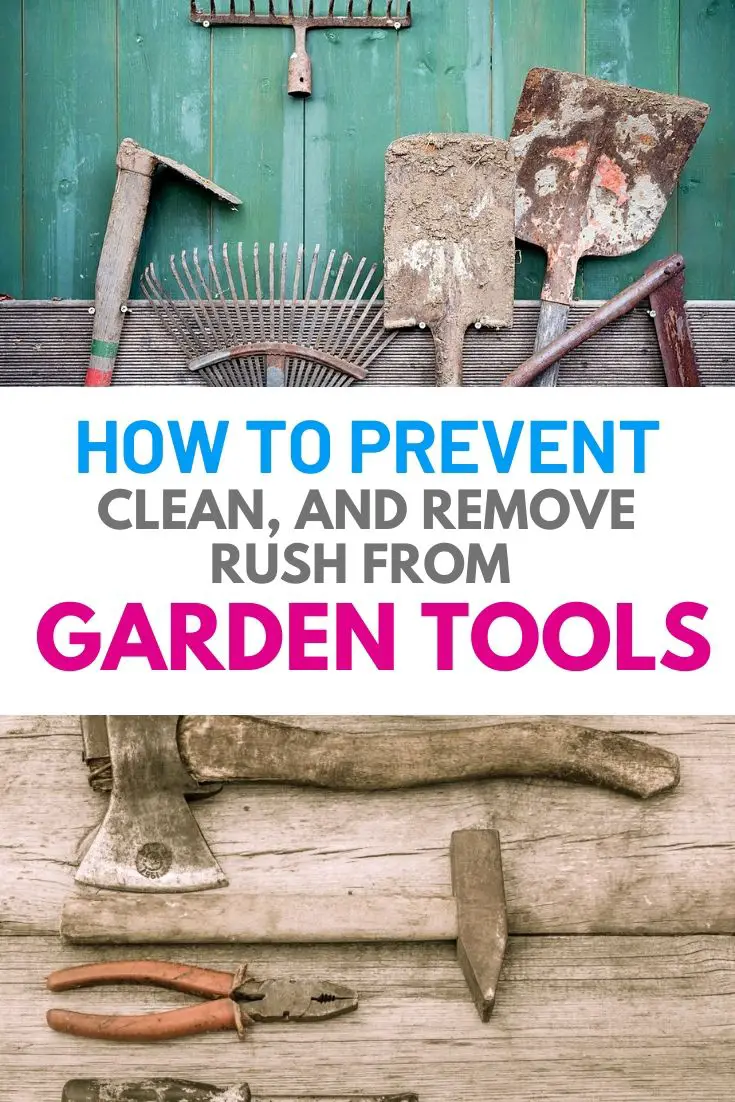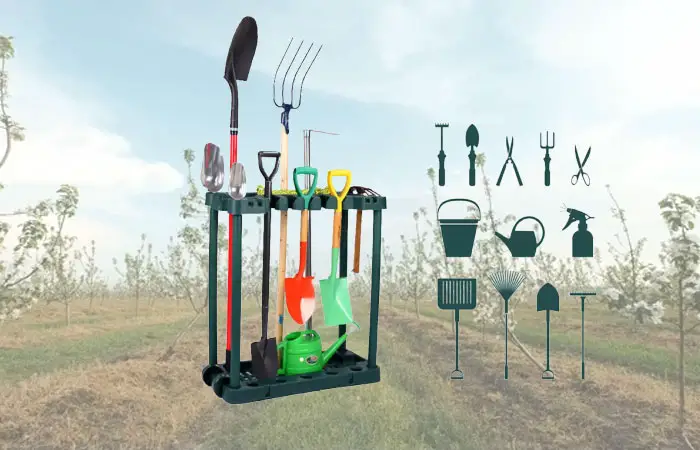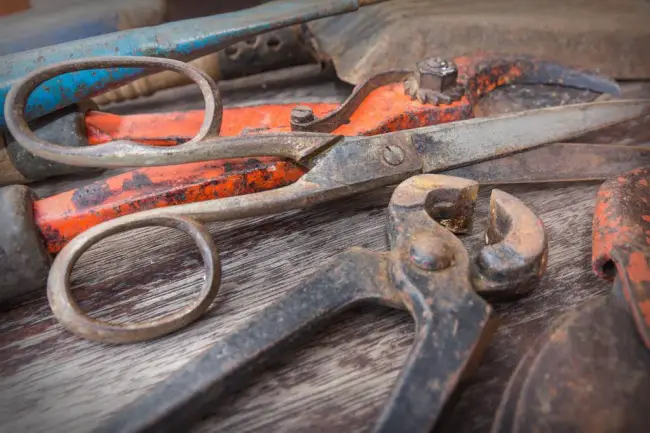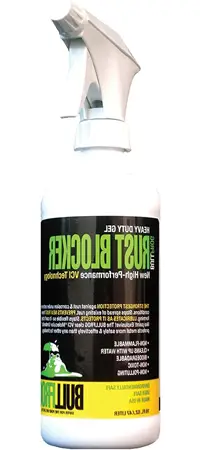To maintain our garden in good shape, having the necessary garden tools is indispensable. To carry out our gardening job smoothly, we need to ensure that our gardening tools stay workable. Therefore, taking good care of our tools becomes an important task where we shouldn’t neglect.
How To Prevent Rust From Garden Tools
Before that, we need to know that the only way and perhaps the best way to prevent rust from forming on your garden tools are to give them proper maintenance. Generally, most people tend to neglect their garden tools after use.
These tools take more abuse than any other, and without proper care and maintenance, they will quickly lose their effectiveness. It would be best if you never left your tools outside or let them remain in wet and dirty conditions.
1. Choose For Higher Quality One
When buying gardening tools, most people are more likely to choose tools selling at low-price. Even though doing so can save you some money, but low-priced garden tools tend to be of low quality as well.
I used to buy low-priced tools, but not that the tools were uncomfortable and rusted very soon. After having few experiences with these tools, I am now willing to pay a higher price to get a better quality one.
Even though I am paying higher-price for those tools, but at the same time, they let me do my garden tasks much easier and saving more time. And they are not going to get rusted easily.
2. Proper Storage of Garden Tools
Proper storage of your garden tools in your garage or garden tool shed to prevent exposure to moisture is one sure way to start on the right foot for rust prevention.
Hang long-handled tools on hanging racks as this will prevent them from getting damage to sharp edges. For smaller tools, you can hang them on pegboards, which will keep them off the ground and keep them organized.
3. Dry Your Tools Before Storage
Keep your tools wiped down to help remove moisture, and if you were pruning shrubs or trees, turpentine is excellent for removing tree sap from tool blades.
Be sure to remove all soil and dirt after the use of your garden tools. Generally, what we do is rinse the tools with water. Some edges are not easy to wash off. You will need to use a screwdriver to remove the dirt or dry mud.
It would help if you let them dry completely before storage. You can apply linseed oil to the tools to protect them from rust and rot.
4. Wipe Metal Parts With Oil
After each use, wipe off the metal parts of the pruning shears, scissors, and trimmer with an oily rag. Or, you can dry your tools with a clean cloth and then lightly spray it with transparent oil, such as WD40 universal anti-rust lubricant.
How To Remove Rust From Garden Tools
While proper cleaning, maintenance, and storage of garden tools is the best way to keep them away from getting rust, there are several non–polluting biodegradable aerosol sprays that give a protective coating to your tools.
Using Rust Removal Products
When talking about this, Bull Frog Rust Blocker and Boeshield T9 immediately come to mind. Both are non–polluting, and both are biodegradable, making them environmentally friendly. Applying a lubricant to your tools, such as your pruners and loppers, will also help to prevent the forming of rust.
However, if your neglected garden tools are already rusted, many different rust removal products are available.
One of the products is Evapo-Rust which is good for items that need soaking, plus it is easy to use and quite safe. Another excellent product for rust removal is Bull Frog Rust Remover. It’s a non-toxic organic gel with no harsh chemicals or smells and protects against further rust formation.
Correctly caring for your garden tools cannot be stressed enough because your garden tools will last for years with proper care and continuous maintenance. However, if your tools should start to rust, an array of rust removers, rust preventers, and rust blocker kits are now available on the market.
Rust removers such as Evapo-Rust, Boeshield Rust-Free Spray, Bull Frog Rust Remover, concrete Rust Remover, and Meijer Rust Remover Gel are all excellent choices if your garden tools should rust.
Rust preventers such as Boeshield T9 Bull Frog Rust Blocker and lubricant. Tuf Cloth for smaller tools is an easy way to remove rust from smaller hand tools.
Abrasive methods for really rusty tools products such as Sandflex Rust Eraser, Norton Bear- Tex Hand Pod5, Brass Utility Brush, and an array of tool blocker kits and rust wipes. But remember, proper care is still the best prevention of rusty garden tools.
Shot blasting
Shot blasting rust removal is the use of high-speed rotating impellers to throw abrasives to the surface of the steel to achieve the purpose of rust removal.
It is a relatively advanced mechanical treatment for removing rust from hull steel. It has not only high production efficiency but also is low cost. It produces less environmental pollution but can only be operated indoors.
Home Remedies To Remove Rust From Tools
Here are some of the home remedies that you can try to remove rust from your gardening tools.
Use Vinegar or Citric Acid
Among the fastest way to remove rust from your gardening tools with home remedies, I’ll go with concentrated vinegar or citric acid, as they seem very safe and are cheap for me to get.
You can blend vinegar with salt. When soaking, you can mix the vinegar and the salt with 1/4 cup of salt with a liter of vinegar.
Some people ever ask me how long they should soak rusty garden tools in vinegar? Well, that is no exact time frame for soaking rusty garden tools. Generally, it is good for you to soak the tool in the vinegar for at least 30 minutes. However, if the rusting condition is severe for the tool, you will need to soak it for a longer time.
Other Ways To Remove Rust
There are still some other ways you can try to remove rust from your gardening tools.
- You can wipe them with sand wax or potato chips. You will remove the rust quickly.
- Apply a little fine sand to the cut potato skin or radish skin. You can easily remove the rust by wiping the tool’s surface.
- Wipe the tool carefully with a cigarette-packed tin foil moistened with salt, removing the rust and making the cleaned copperware shine like new.
- Wipe the gardening tool with sand wax or use a rag and dip it in tomato sauce to remove the rust.
Read also: Must-Have Garden Tools and How to Choose Them
How to Take Care and Clean Your Garden Tools?
Garden tools are not cheap, and the ones that are don’t usually last too long. Therefore, proper care and maintenance are essential in keeping your tools working efficiently from year to year. To keep your gardening tools in good condition and working properly, there are a few simple things that you can do.
The first piece of advice is to remember that some garden tools retain moisture that may cause rust, while others with blades such as pruners can easily transfer diseases from one plant to another.
This means that you should always try to remove dirt, grit, and grime from your tools, killing any bacteria that may have come in contact with them. Also, always wipe your tools clean after each use and before putting them away. And be sure never to leave them in dirt or anywhere that they may get consistently wet.
A good stiff bristle brush is good for cleaning dry hard dirt before washing and if deep cleaning is required, soak in hot soapy water for about 15 minutes, then rinse. After washing and rinsing, if you’ve been trimming diseased shrubs or plants, soak your tools in a solution of 3 parts water and 2 parts bleach to further kill any bacteria and prevent any transfer to other tools.
Be aware that some garden tools need disassembling before cleaning, and you should reassemble them only after cleaning and thorough drying. Always rinse under running tap water, then lay flat to dry.
If lubricating is needed (screws and balls), WD40 works wonder followed by 3in1 oil, then wipe clean. You can smooth rough spots on wooden handles with medium grain sandpaper then condition them by rubbing with linseed oil, which will prevent premature splitting and rotting of the wood.
One last word of advice is to be sure to sharpen your garden tools at least once a year and when they are not in use, store them on a shelf in a tool cabinet or a garden shed. Be sure to properly hang and store the ones that require hanging to help ensure that they’ll be functionally ready and in good working order when it’s time for you to use them again.
Remember these tips for cleaning garden tools, and you’ll see how having the right garden tool cleaned, and ready-to-go for the job at hand helps get it done easier and faster.




